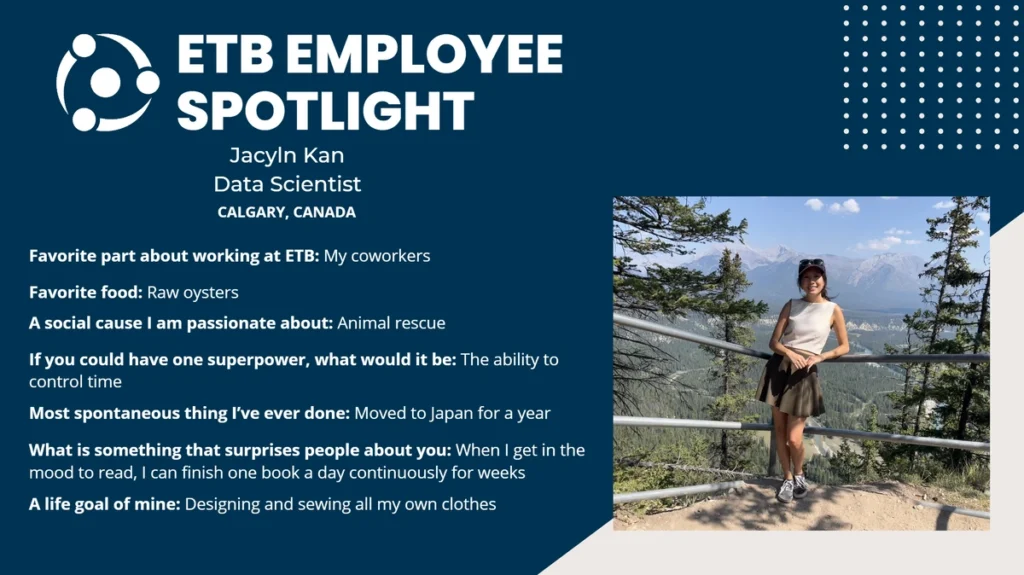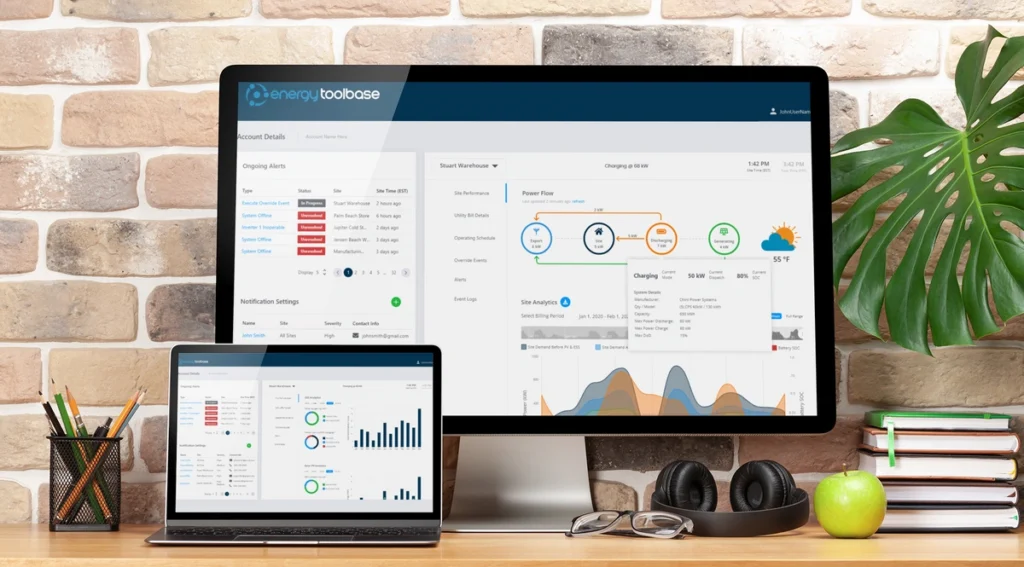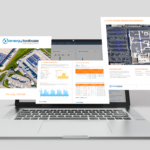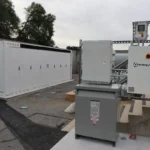Our engineering team is pivotal at Energy Toolbase, ensuring the precision of our software controls. Dedicated to maintaining the highest performance standards, they diligently monitor and diagnose any performance issues that arise in the field, working to identify and resolve these problems promptly. Their rapid response minimizes downtime and ensures our users can efficiently deploy their solar and energy storage solutions. Our engineering team ensures that our software remains robust, accurate, and user-friendly, enabling our customers to achieve optimal performance from their energy systems.
Meet Jacyln Kan, one of Energy Toolbase’s Data Scientists from Calgary, Canada. With three years of experience at Energy Toolbase, Jaclyn provides insights into the role of a Data Scientist at ETB, detailing the end-to-end process of designing machine learning models, her favorite project, and what the future holds for Energy Toolbase.
Q: Tell us about your job responsibilities as a Data Scientist at Energy Toolbase.
Q: Tell us about how you got started as a Data Scientist. What drew you to that career?
Q: Can you describe the end-to-end process of developing a machine learning model, from data collection to deployment?
Q: What are some common challenges you face when deploying machine learning models in a production environment, and how do you overcome them?
Q: How does Energy Toolbase’s Acumen EMS rely on machine learning?
Q: What are some exciting things you’re working on and working towards at Energy Toolbase?
Q: What has been your favorite project to work on in your time at Energy Toolbase?




